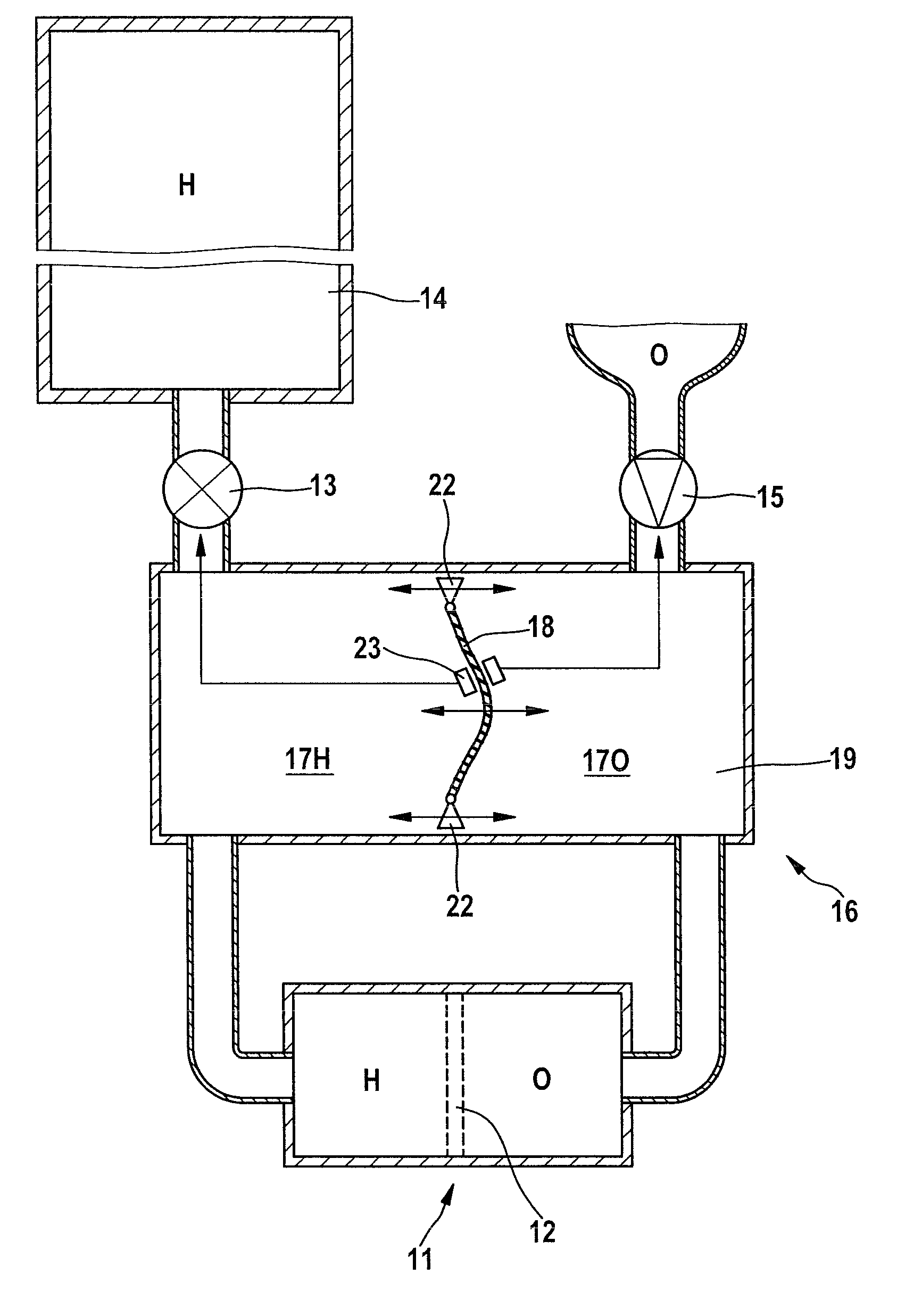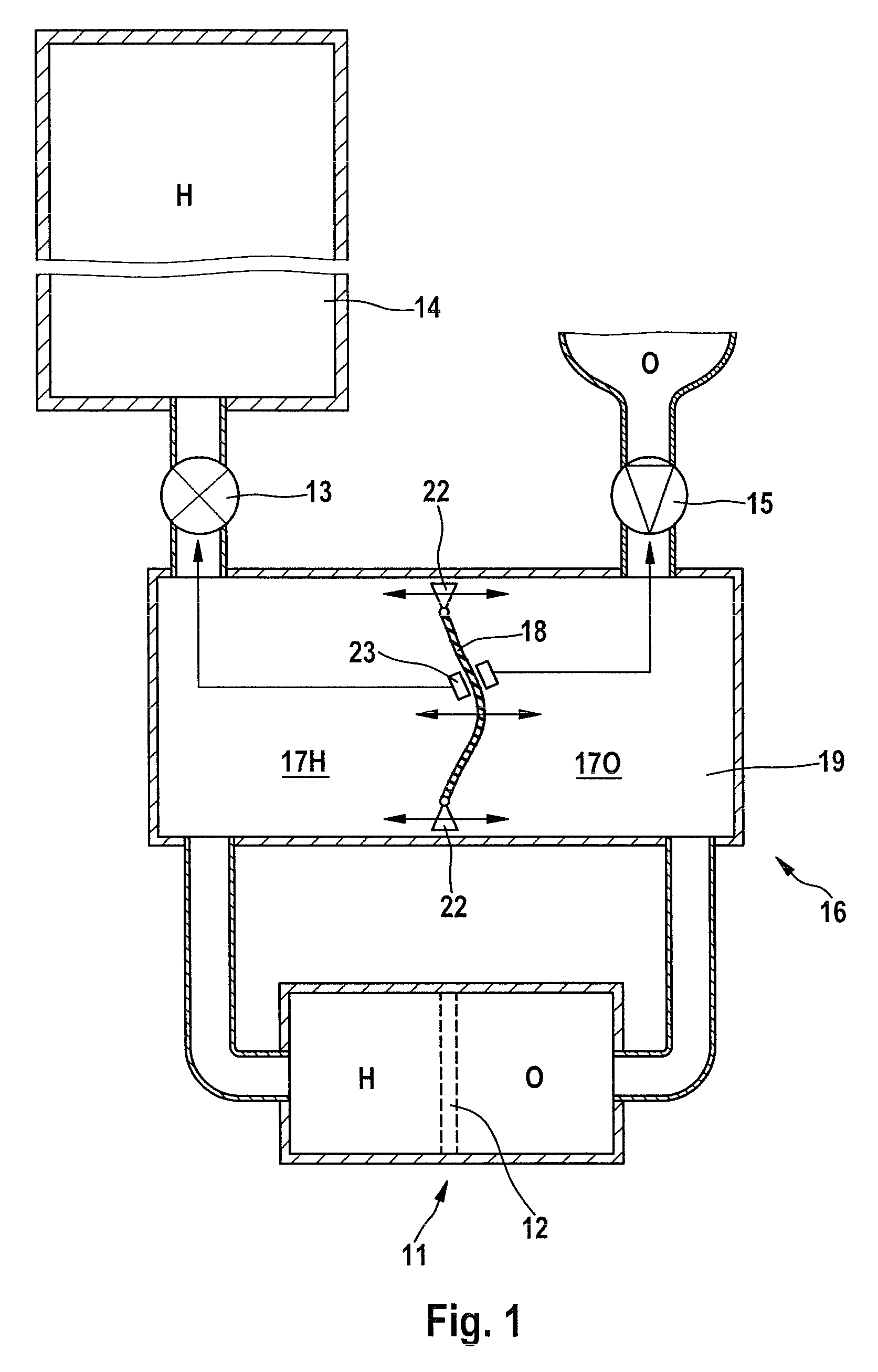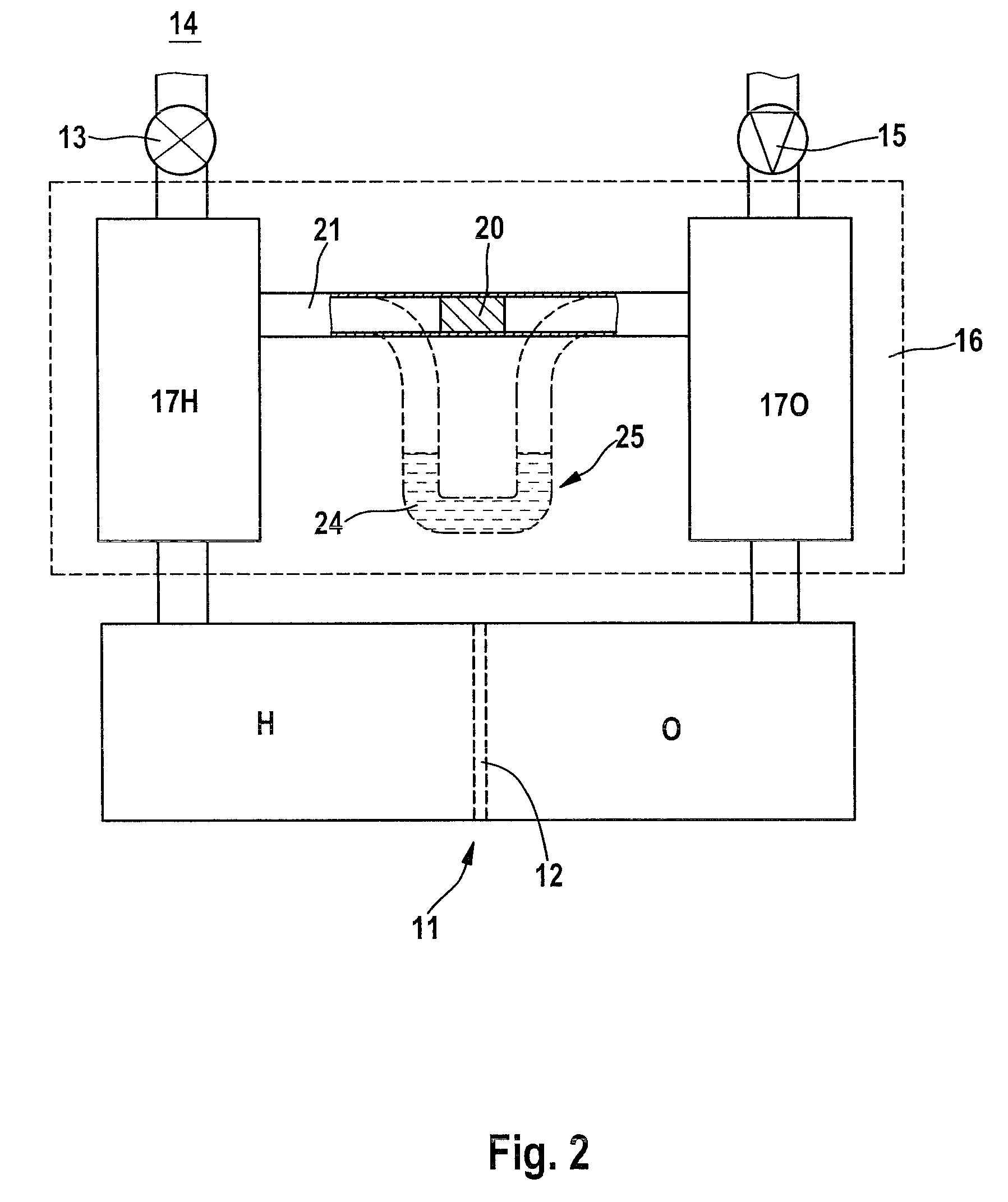Device and method for operation of a fuel cell
a fuel cell and device technology, applied in the direction of fuel cells, solid electrolyte fuel cells, electrical devices, etc., can solve the problems of high complexity of one of the raw-material gases as a function of the instantaneous feed pressure of the other raw-material gas, and the outlet valve of a gas cylinder or a fuel reservoir of this type cannot be adjusted in practice sufficiently quickly, continuously and accurately for defined pressure changes, etc., to avoid local overloading, reduce volume, and low mass
- Summary
- Abstract
- Description
- Claims
- Application Information
AI Technical Summary
Benefits of technology
Problems solved by technology
Method used
Image
Examples
Embodiment Construction
[0021]A fuel cell 11 is split in two by an electrolytic membrane 12. By way of example, on one side of the membrane 12, specifically the anode side, the cell 11 is fed with hydrogen H as fuel via a pressure-reducing valve 13 from a generator or from a reservoir 14 such as a compressed-gas cylinder and, opposite this, that is to say on the cathode side, the cell is fed for example with oxygen O as the oxidant (from a reservoir or) from the surrounding air, which is supplied by means of a compressor 15.
[0022]This raw-material gas feed is now, however, according to the invention no longer provided directly to the fuel cell 11 but via a pressure equalizing system 16, which is connected directly upstream of it, with two pressure equalizing chambers 17H, 17O which, in the case of FIG. 1, are separated from one another in a gas-tight manner by a separating wall 18, which can be deformed by pressure, as a function of the pressure difference, in a similar manner to a membrane, in a pressure-...
PUM
| Property | Measurement | Unit |
|---|---|---|
| pressure | aaaaa | aaaaa |
| total volume | aaaaa | aaaaa |
| volume | aaaaa | aaaaa |
Abstract
Description
Claims
Application Information
 Login to View More
Login to View More - R&D
- Intellectual Property
- Life Sciences
- Materials
- Tech Scout
- Unparalleled Data Quality
- Higher Quality Content
- 60% Fewer Hallucinations
Browse by: Latest US Patents, China's latest patents, Technical Efficacy Thesaurus, Application Domain, Technology Topic, Popular Technical Reports.
© 2025 PatSnap. All rights reserved.Legal|Privacy policy|Modern Slavery Act Transparency Statement|Sitemap|About US| Contact US: help@patsnap.com



